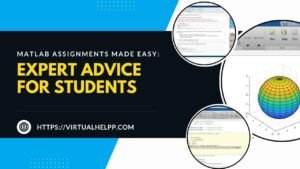Table of Contents
ToggleIntroduction to Tutoring
Tutoring is a personalized educational support system designed to help students improve their understanding and performance in various subjects. Its primary purpose is to provide individualized instruction that caters to students’ specific needs and learning styles, complementing the standard classroom education.

Historically, tutoring has been a cornerstone of education, tracing roots back to ancient civilizations where scholars provided one-on-one instruction to students. Over time, the concept has evolved, adapting to modern educational needs and technological advancements.
Types of Tutoring
One-on-One Tutoring
If we talk about Type of tutoring then One-on-one tutoring is the most traditional form, involving a single student and a tutor. This method allows for personalized attention, tailored lesson plans, and direct interaction, making it highly effective for addressing specific academic challenges.
Group Tutoring
Group tutoring involves a tutor working with multiple students simultaneously. This type of tutoring fosters collaborative learning and peer interaction, which can enhance the learning experience. It’s often more affordable than one-on-one sessions and can be just as effective, especially in small groups.
Online Tutoring
Online tutoring has gained immense popularity due to its convenience and accessibility. Through digital platforms, students can connect with tutors from anywhere in the world, accessing a wide range of subjects and expertise. Online tutoring offers flexibility in scheduling and the comfort of learning from home.
Peer Tutoring
Peer tutoring involves students tutoring their classmates or peers. This method can be highly beneficial as it promotes a collaborative learning environment where students can relate to each other’s experiences and challenges. Peer tutors often reinforce their knowledge while helping others.
Subject-Specific Tutoring
Subject-specific tutoring focuses on particular subjects or areas of study. Whether it’s mathematics, science, language arts, or any other discipline, subject-specific tutors possess specialized knowledge and can provide in-depth assistance in their areas of expertise.
The Role of a Tutor
Responsibilities
A tutor’s primary responsibility is to facilitate a student’s learning process by providing guidance, support, and resources tailored to the student’s needs. This involves explaining complex concepts, assisting with homework, preparing for exams, and developing effective study strategies.
Qualities of a Good Tutor
A good tutor possesses excellent communication skills, patience, and a deep understanding of the subject matter. They should be adaptable, empathetic, and capable of motivating students. Building a positive and supportive relationship with students is crucial for effective tutoring.
Tutor vs. Teacher
While both tutors and teachers play vital roles in education, their functions differ. Teachers deliver structured curricula to larger groups in a classroom setting, whereas tutors provide individualized instruction and focus on addressing specific academic challenges faced by students.
Benefits of Tutoring
Personalized Attention
One of the most significant advantages of tutoring is the personalized attention students receive. Tutors can tailor their teaching methods to suit the student’s learning style, pace, and specific needs, ensuring a more effective and engaging learning experience.
Improved Academic Performance
Regular tutoring sessions can lead to significant improvements in academic performance. By addressing knowledge gaps and reinforcing concepts, tutors help students achieve better grades and a deeper understanding of the subject matter.
Enhanced Understanding of Subjects
Tutors provide detailed explanations and additional resources that can enhance a student’s comprehension of complex topics. This deeper understanding often leads to increased confidence in tackling challenging subjects.
Boost in Confidence and Motivation
Tutoring can positively impact a student’s self-confidence and motivation. As students gain mastery over difficult concepts and see their academic performance improve, they develop a more positive attitude toward learning and education.
Online Tutoring Platforms
Emergence of Online Tutoring
The rise of digital technology has revolutionized tutoring, making online tutoring platforms a popular choice for students and parents. These platforms offer a range of services, including live sessions, recorded lessons, and interactive tools that facilitate effective learning.
Features of a Good Online Tutoring Platform
A good online tutoring platform should provide a user-friendly interface, qualified tutors, a variety of subjects, and flexible scheduling options. Features such as video conferencing, screen sharing, and digital whiteboards enhance the learning experience and make online tutoring interactive and engaging.
Benefits of Online Tutoring
Online tutoring offers several advantages, including convenience, accessibility, and a broader selection of tutors and subjects. Students can schedule sessions at their convenience, eliminating the need for travel and allowing for more consistent and frequent tutoring.
Choosing the Right Tutor
Factors to Consider
When selecting a tutor, consider their qualifications, experience, teaching style, and compatibility with the student’s needs. It’s also important to check reviews and testimonials from other students and parents.
Where to Find Tutors
Tutors can be found through various channels, including tutoring centers, online platforms, school recommendations, and personal referrals. Online platforms often provide detailed profiles and reviews, making it easier to find a suitable match.
How to Assess a Tutor’s Qualifications
Assessing a tutor’s qualifications involves reviewing their educational background, certifications, and relevant experience. Conducting an initial interview or trial session can also help determine if the tutor’s teaching style aligns with the student’s learning preferences.
The Tutoring Process
Initial Assessment
The tutoring process typically begins with an initial assessment to identify the student’s strengths, weaknesses, and specific academic needs. This helps the tutor develop a customized learning plan.
Setting Goals
Setting clear, achievable goals is crucial for a successful tutoring experience. Goals provide direction and motivation, allowing both the student and tutor to track progress and adjust strategies as needed.
Regular Sessions
Consistency is key in tutoring. Regular sessions help reinforce learning, build momentum, and address ongoing academic challenges. The frequency of sessions can vary based on the student’s needs and availability.
Feedback and Progress Tracking
Effective tutoring involves continuous feedback and progress tracking. Tutors should provide constructive feedback, celebrate achievements, and adjust teaching methods to ensure continuous improvement.
Challenges in Tutoring
Common Challenges Faced by Students
Students often face challenges such as a lack of motivation, difficulty grasping complex concepts, and balancing tutoring with other commitments. Tutors need to identify these issues and develop strategies to address them.
How Tutors Address These Challenges
Tutors can address these challenges by creating engaging lesson plans, providing real-world examples, and fostering a supportive and encouraging learning environment. Building a strong rapport with students can also help in overcoming motivational and academic obstacles.
Success Stories
Real-Life Examples of Successful Tutoring
Success stories from students who have benefited from tutoring can be inspiring and motivating. These examples highlight the positive impact of personalized instruction on academic performance and personal growth.
Testimonials
Testimonials from students and parents provide valuable insights into the effectiveness of tutoring services. Positive feedback and success stories can help build trust and credibility for tutoring platforms and individual tutors.
The Future of Tutoring
Technological Advancements
The future of tutoring is likely to be shaped by technological advancements such as artificial intelligence, virtual reality, and adaptive learning systems. These technologies have the potential to enhance the personalization and effectiveness of tutoring.
The Growing Importance of Tutoring in Education
As education becomes increasingly competitive, the importance of tutoring is expected to grow. Personalized instruction can help bridge learning gaps, support struggling students, and enhance overall academic achievement.
Conclusion
Tutoring is a valuable educational resource that provides personalized support and guidance to students. Whether through traditional one-on-one sessions, group tutoring, or online platforms, tutoring can significantly enhance a student’s academic performance, confidence, and motivation. As technology continues to evolve, the future of tutoring looks promising, offering even more innovative and effective ways to support student learning.
FAQs
What is the difference between tutoring and teaching?
Tutoring provides individualized instruction tailored to a student’s specific needs, while teaching typically involves delivering a structured curriculum to a larger group of students.
How often should a student meet with a tutor?
The frequency of tutoring sessions depends on the student’s needs and goals. Generally, meeting once or twice a week can provide consistent support and progress.
Can tutoring help with exam preparation?
Yes, tutoring can be highly effective for exam preparation. Tutors can provide targeted reviews, practice tests, and strategies to improve exam performance.
Is online tutoring as effective as in-person tutoring?
Online tutoring can be just as effective as in-person tutoring, especially with the use of interactive tools and technologies that facilitate engagement and communication.
What should I look for in a good tutoring platform?
A good tutoring platform should offer qualified tutors, a user-friendly interface, flexible scheduling options, and interactive tools such as video conferencing and digital whiteboards. Reviews and testimonials can also provide insights into the platform’s effectiveness.





